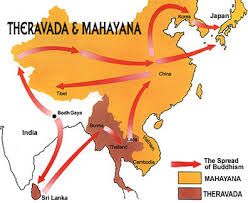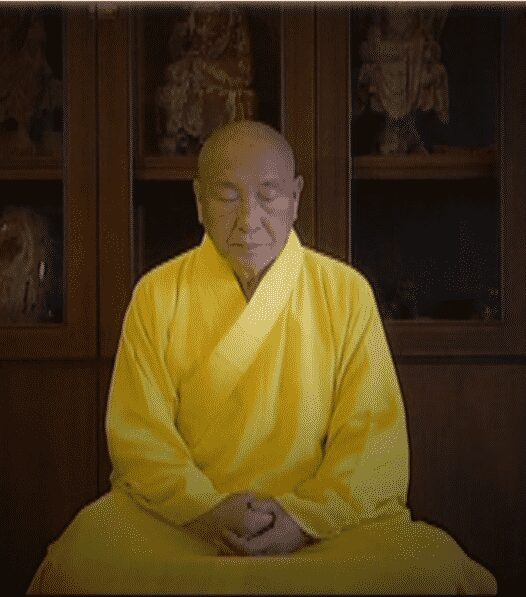Cetasika = Ceta + s + ika is translated as “mental factors”, “mental states”, “mental events”, “concomitants of consciousness”, “mental concomitants”, “mental adjuncts”, “psychic factors”, etc. Cetasika, (adj.) means belonging to ”ceto” – mind, in other words, is a mental property. Mental factors are aspects of the mind that apprehend the quality of an object and have the ability to color the mind.
When citta (consciousness) arises, there are mental states that depend on citta. Those that have to occur depending on citta are called “cetasika”. All types of cetasika are able to arise only by depending on citta. Without citta, they are not able to arise. But citta arises without some of the cetasika. When citta and cetasika associate with one another, they have four characteristics:
– arises together with consciousness,
– perishes together with it,
– has an identical object with it,
– has a common basis with it.
In Buddhism, the mental factors are identified within the teachings of the Abhidharma. According to Abhidhamma, citta – mind or consciousness, is accompanied by fifty-two mental states (cetasikas). One of them is Vedanà (feeling); another is Sannà (perception). The remaining fifty are collectively called Saïkhàrà. Cetanà (volition) is the most important of them. Within the Theravāda tradition, the Abhidhammattha-sangaha enumerates the fifty-two mental factors, but there are other mental factors mentioned in the Theravada teachings. Those fifty-two important factors help us to understand how the mind functions.
The fifty-two types of cetasika are classified into three groups:
- Aññasamāna group – Aññasamāna, “common to others”, is classified into two: universal and particular. The universal aññasamāna that associates with all cittas is further subdivided into other seven.
- Akusala group – Akusala cetasika, “immoral mental state” is subdivided into fourteen.
- Sobhana group – The mental state that is with virtue is “sobhana”. The sobhana mental states are classified into four groups: sobhana mental states that are common to all types of sobhana citta, mental states that abstain from evil speech, action and livelihood, mental states that have limitless objects on which one must be practiced and mental states that realize an object – the faculty of wisdom.
The fifty-two different cetasikas have their own characteristic and function. Of these, 25 (Sobhana group) are lofty qualities (either karmically wholesome or neutral), 14 (Akusala group) karmically unwholesome, while 13 (Aññasamāna group) are as such karmically neutral, their karmical quality depending on whether they are associated with wholesome, unwholesome or neutral consciousness. Some examples of cetasikas are: feeling, perception (or memory), contact, intention, attention, effort, interest, desire- to- do, restlessness, attachment, conceit, hate, envy, awareness, confidence, detachment, balance of mind, concentration, kindness, compassion.
The mental states (cetasika) are associated with consciousness (citta), arise and perish together with consciousness, and have the same object and basis as the consciousness. Citta, the consciousness, does not arise singly, it is always accompanied by these mental factors. Only one citta arises at a time and each citta is accompanied by several cetasikas. Citta is the leader in cognizing an object and the accompanying cetasikas have each their own function while they assist citta in cognizing an object. There is not one moment of experience occurring without at least some of them. Their function is to add to the experience each in their own way.
Each cetasika or mental factor has its own special characteristic by which it is recognized and function which it performs. For example, the characteristic of conceit is haughtiness and self-praise is its function.
There are seven cetasikas which have to arise with every citta; they are called the “universals” (sabbacitta-sadharana). Some cittas are accompanied only by the universals, others are accompanied by several more cetasikas. Thus, every citta is accompanied by at least the seven universals. Some 6 others arise as a whole or in parts. The remainder are morally good or bad or neutral and they arise in different combinations. Some cetasikas, such as feeling and remembrance or “perception” (sannā), accompany each citta, others do not. Feeling, in Pāli: vedanā, is a cetasika which arises with every citta. Citta only knows or experiences its object; it does not feel. Feeling, vedanā, however, has the function of feeling. Contact, in Pāli: phassa, is another cetasika which arises with every citta; it “contacts” the object so that citta can experience it.
There are also types of cetasika which do not arise with every citta. Unwholesome mental factors, akusala cetasikas, accompany only akusala cittas, whereas sobhana cetasikas, “beautiful” mental factors, accompany kusala cittas. Among the cetasikas which can accompany akusala cittas or kusala cittas, some are roots (hetus). A root or hetu is the foundation of the akusala citta or kusala citta, just as the roots are the foundation of a tree. They give a firm support to the citta and cetasikas they arise together with. There are three cetasikas which are unwholesome roots, akusala hetus: attachment (lobha), aversion (dosa) and ignorance (moha).
Cetasika arises depending only on citta. Citta associates with cetasika. Cittas and some of the cetasikas work together on the same object. When citta and cetasika associate with one another, there are two ways of association:
- The way of sampayoga – it describes how the cetasika associates with how many cittas.
- The way of saṅgaha – it describes how the citta associates with how many cetasikas.
Whereas in the Suttas all phenomena of existence are summed up under the aspect of 5 groups: materiality, feeling, perception, mental constructions, consciousness, the Abhidhamma treats them under the more philosophical 3 aspects: consciousness, mental properties and materiality – citta, cetasika, rūpa.
No consciousness exists apart from its concomitants. Both consciousness and its respective co-adjuncts arise and perish simultaneously.
photo credit: yumpu




